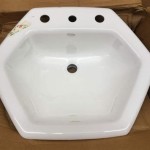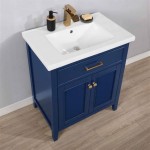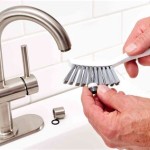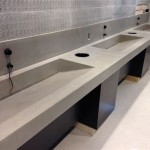How To Remove a Delta Bathroom Sink Drain
Delta faucets are a popular choice for homeowners due to their durability and stylish design. However, over time, the drain assembly of a Delta bathroom sink can become clogged or require cleaning. Removing the drain is a common maintenance task that homeowners can perform themselves with the proper tools and knowledge. This article will provide a step-by-step guide on how to remove a Delta bathroom sink drain, ensuring a safe and efficient process.
1. Gather Necessary Tools and Materials
Before beginning the removal process, gather the necessary tools and materials to ensure a smooth operation. These include:
- Adjustable wrench
- Channel-lock pliers
- Flat-head screwdriver
- Phillips-head screwdriver
- Bucket or bowl for catching water
- Shop towels or rags
- Optional: Replacement drain components (if necessary)
Having these tools readily available will make the removal process efficient and prevent unnecessary delays.
2. Prepare the Sink Area
To prevent water damage and ensure a clean workspace, prepare the sink area before proceeding. This includes:
- Turn off the water supply to the sink. This can typically be done by turning the shut-off valve located underneath the sink.
- Place a bucket or bowl beneath the drain to catch any remaining water in the sink.
- Remove any items from the sink to prevent them from falling into the drain.
- Clean the area around the drain to improve visibility and prevent debris from interfering with the removal process.
These steps will help to create a safe and organized work environment for the removal process.
3. Remove the Drain Cover
The first step involves removing the drain cover, which is typically secured with a small, decorative screw. This can be done by:
- Using a Phillips-head screwdriver to loosen and remove the screw holding the cover in place. Some models may use a flat-head screw instead.
- Gently lift the cover off the drain assembly. Some covers may require a slight twisting motion to release them.
After removing the cover, the underlying drain mechanism will be exposed, allowing access to the components for further removal.
4. Remove the Pop-up Assembly
The pop-up assembly is the mechanism that controls the flow of water through the drain. This assembly is typically secured with a retaining nut that can be loosened using an adjustable wrench. Follow these steps to remove the pop-up assembly:
- Locate the retaining nut, which is usually located beneath the sink or within the drain assembly. It may be concealed by a decorative trim ring.
- Using the adjustable wrench, carefully loosen the retaining nut by turning it counter-clockwise. Be cautious not to overtighten the nut.
- Once the retaining nut is loose, remove the pop-up assembly from the drain assembly by gently pulling it upward. The assembly may be attached to the drain by a lift rod that can be easily unlatched.
Removing the pop-up assembly will expose the drain tailpiece, which is the pipe that connects the sink drain to the drainpipe.
5. Remove the Drain Tailpiece
The drain tailpiece is the pipe connecting the sink drain to the drainpipe. It is typically secured with a slip nut or a compression nut. The method for removing the tailpiece depends on the type of nut used. Follow these steps for removing the tailpiece:
- For a slip nut, use an adjustable wrench or channel-lock pliers to grip the nut and turn it counter-clockwise to loosen it. Once loose, pull the tailpiece downwards to separate it from the drain assembly.
- For a compression nut, use the adjustable wrench to loosen the nut by turning it counter-clockwise. Once loose, pull the tailpiece downwards to separate it from the drain assembly. Because compression nuts are designed to create a tight seal, they may require more force to loosen than a slip nut.
After removing the tailpiece, the drain assembly will be completely removed from the sink. This allows for further cleaning, inspection, or replacement of the drain components if necessary.
6. Clean or Replace Drain Components
Once the drain assembly is removed, it is essential to clean or replace any necessary components. This includes:
- Clean the drain tailpiece to remove any accumulated debris or clogs. This can be done using a drain cleaner or a wire brush.
- Inspect and clean the pop-up assembly for any dirt, grime, or mineral deposits. If necessary, replace any damaged or worn-out components.
- If the drain assembly itself is damaged or corroded, it is recommended to replace it with a new one.
Regular cleaning and maintenance of the drain assembly help to prevent clogs and ensure smooth water drainage, extending the life of the sink.
7. Reassemble the Drain Assembly
After cleaning or replacing any necessary components, reassemble the drain assembly in reverse order. This involves:
- Connecting the drain tailpiece to the drain assembly using a new slip nut or compression nut. Ensure the nut is tightened securely without overtightening.
- Reinstall the pop-up assembly by aligning it with the drain assembly and pushing it downward until it is securely seated. Ensure the lift rod is properly connected to the pop-up assembly.
- Replace the drain cover by aligning it with the drain assembly and securing it with the screw using a Phillips-head screwdriver or flat-head screwdriver.
After reassembling the drain assembly, turn the water supply back on and check for leaks. If any leaks are present, tighten the connections or replace any damaged components.

How To Remove A Delta Sink Stopper Step By
Install A Drain Stopper So The Is Removable

How To Remove A Delta Bathroom Sink Pop Up Stopper Hunker

Tips Tricks Remove Delta 2 Handle 4 In Bathroom Sink Faucet With Bar 5 21 18

Bathroom Sink Popup And Stopper Problems

How To Fix A Bathroom Sink Drain Stopper 4 Easy Solutions

How To Install A Delta Pop Up Sink Drain

How To Install A Delta Push Pop Sink Drain

How To Remove A Delta Bathroom Sink Pop Up Stopper Hunker

How To Repair Leaking Dripping Delta Faucet Diyplumbing Serviceplumbing Tappplumbing
Related Posts







